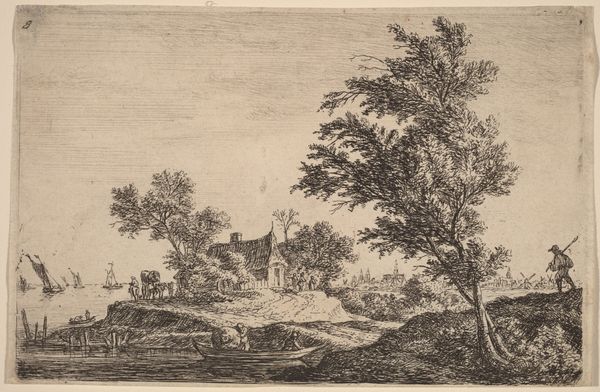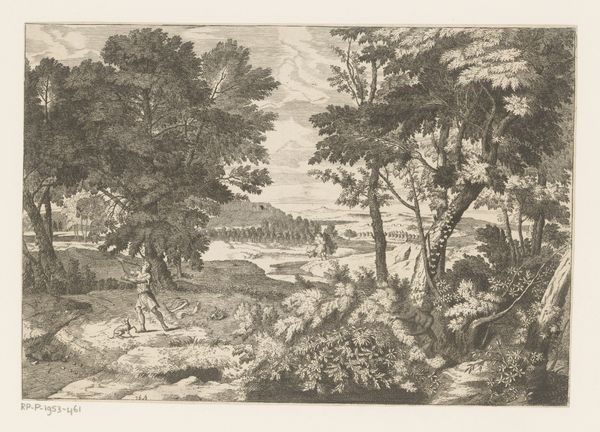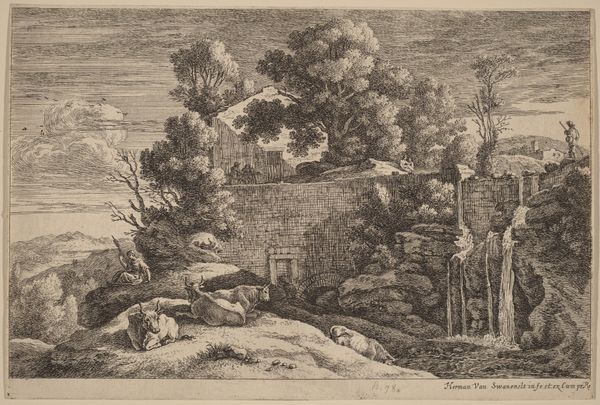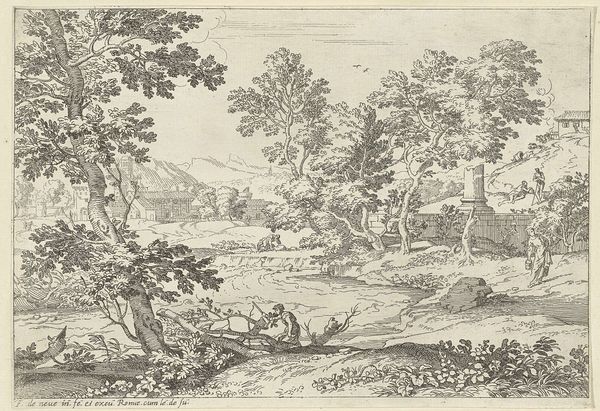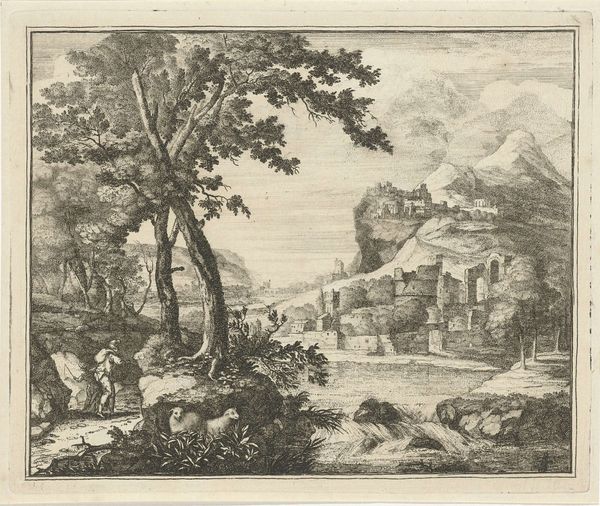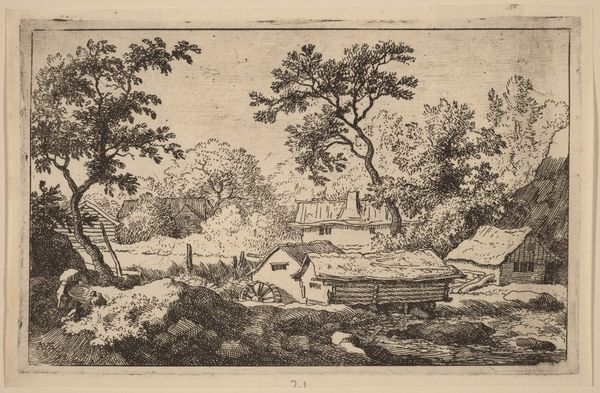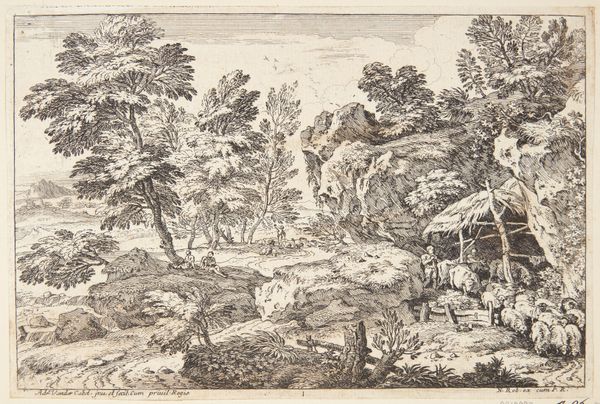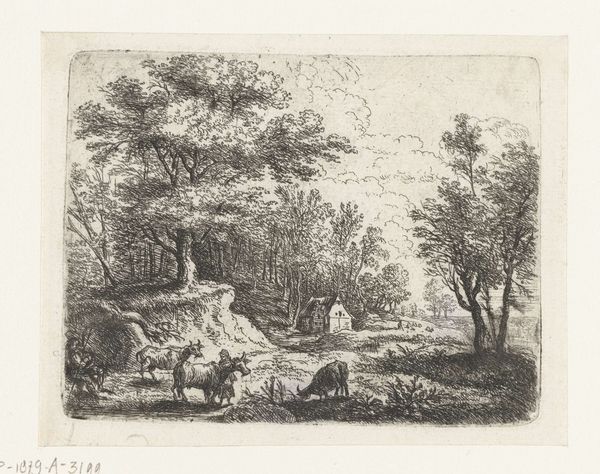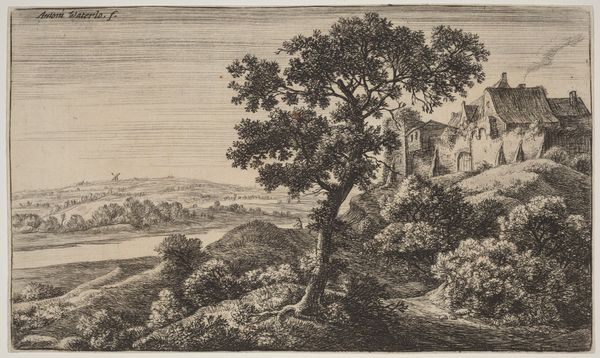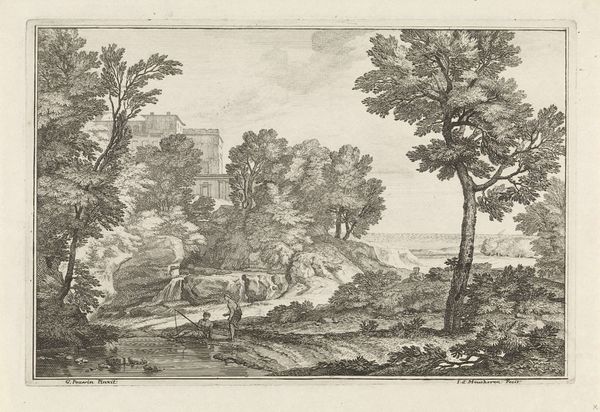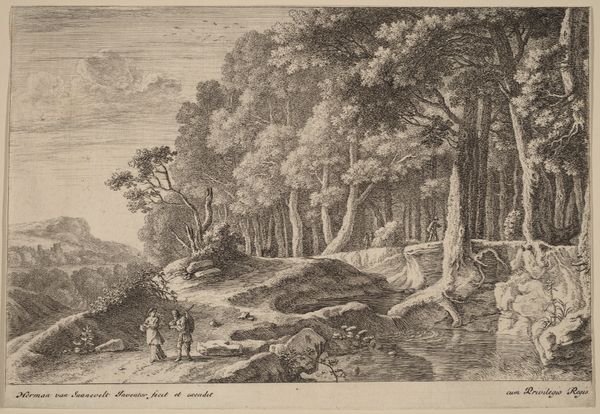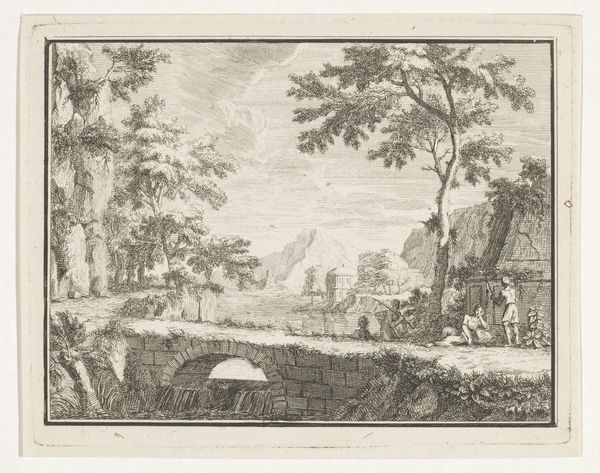
drawing, print, engraving
#
drawing
#
baroque
#
pen drawing
# print
#
landscape
#
figuration
#
line
#
history-painting
#
engraving
Dimensions: height 226 mm, width 314 mm
Copyright: Rijks Museum: Open Domain
Curator: What a tranquil scene. We are looking at "Rivierlandschap met figuren," or "Riverside Landscape with Figures," a pen drawing and engraving by B. Chiboust, created sometime between 1700 and 1738. Editor: My first impression is of a kind of idealized Arcadia. The stark lines of the engraving give it a formal quality, almost like a stage set. The figures are small and neatly placed amidst the trees. It feels intentionally constructed. Curator: It's interesting that you perceive it as a stage set. Considering the historical context of the Baroque era, the composition emphasizes a highly structured worldview, mirrored in social and political hierarchies. This connects to ideas of land ownership, power, and control. It’s all there, subtly reinforced in this “peaceful” landscape. Editor: I see what you mean. The arrangement does feel carefully prescribed. I'm drawn to the repetition of curved lines: the path, the bridge, even the way the trees lean. There's a gentleness, but also a sense of visual rhyme. The artist really guides the viewer’s eye in very specific ways. What is most striking, though, is how the building or fortress emerges from what initially feels like an immersive wood. Curator: Right! That architectural element is particularly important. While on the surface it suggests classical architecture with accompanying history-painting themes, it simultaneously reflects a visual imposition onto the natural world. The Baroque often presents an idealized vision masking the era’s rigid societal norms and political landscapes. These were times of both grand displays of power and nascent philosophical questioning. How might these images affect individuals of the day, specifically those experiencing gender, class, or race-based oppressions? Editor: Absolutely, thinking of the enduring power of landscapes like these reminds us how imagery naturalizes cultural memory and specific narratives that bolster hegemonic systems. Curator: These kinds of artistic landscapes, especially when displayed for those very communities who are kept outside them—both literally and figuratively—perpetuate societal othering by producing notions of lack or absence. Editor: Thinking about it that way, the peace it evokes in me now feels much more fraught. Thanks for shedding light on some hidden complexities. Curator: The pleasure's all mine. Thank you for speaking the image with me.
Comments
No comments
Be the first to comment and join the conversation on the ultimate creative platform.
